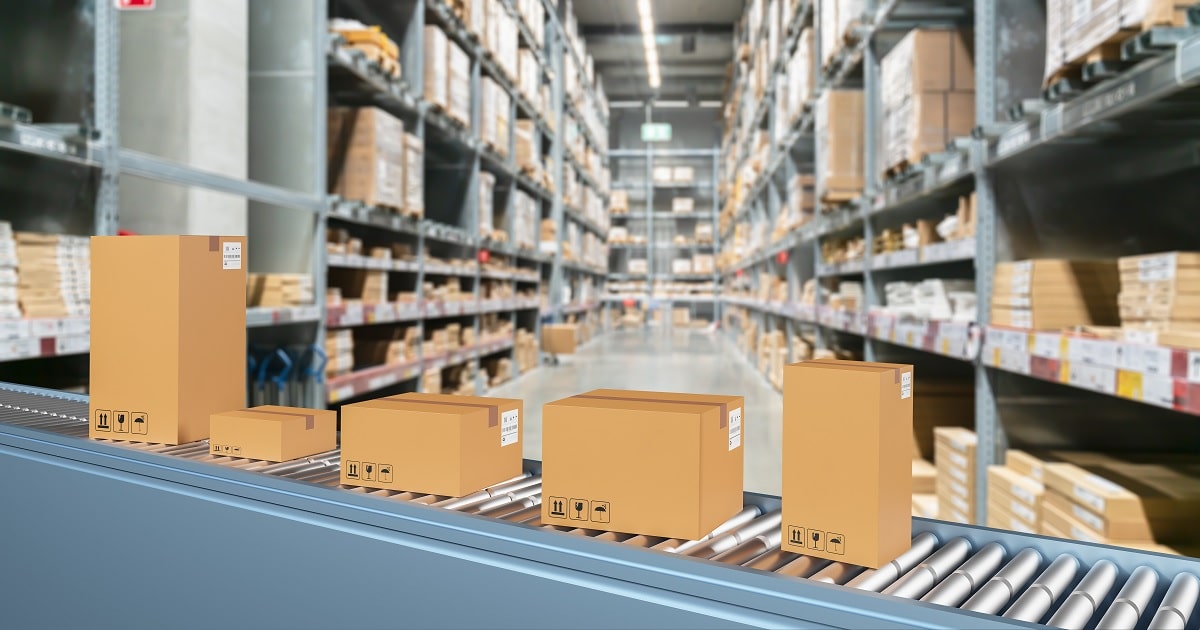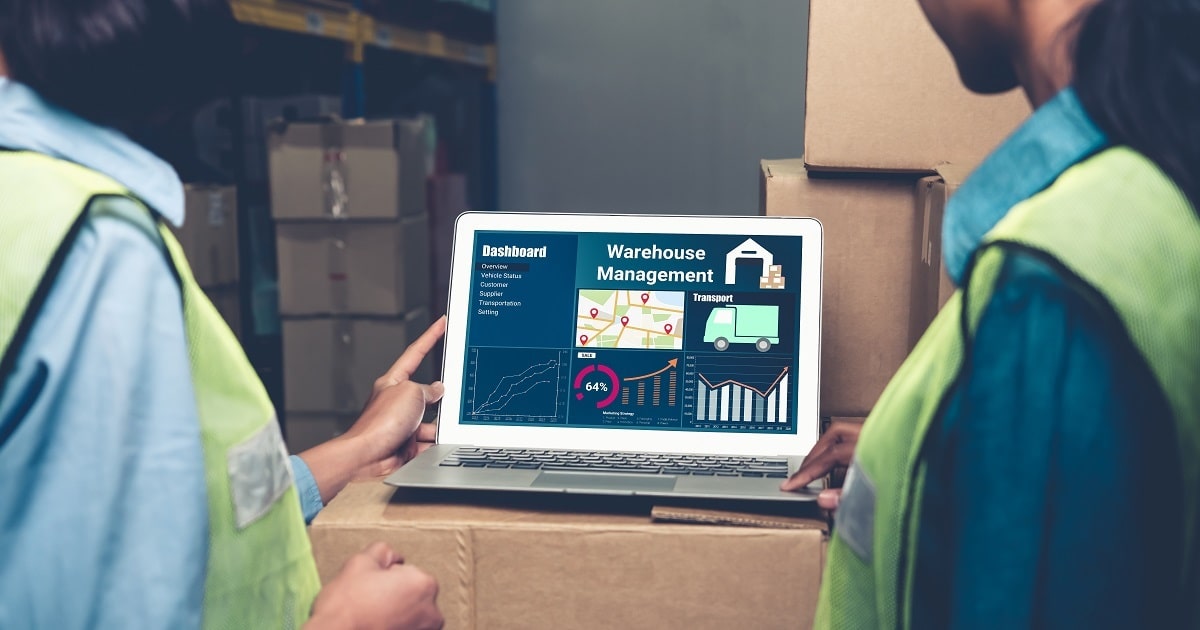
Warehousing and Distribution
Article | July 17, 2023
Carrier management systems have undergone much evolution thanks to the exponential development in shipping and logistics technology. Although its primary mission was to assign, control, and track shippers and carriers, the industry's post-pandemic trends have reflected a variety of new best practices.
Traditionally, many carrier management systems were manually operated and made extensive use of paper processes that didn’t provide perks like real-time data, reporting functionalities, or the visibility to make informed decisions. Today’s carrier management systems comprise these features and go even further. They offer tangible improvements and advantages that impact the bottom line. Here are three things you should look for in a carrier management solution to make sure your digital transformation goes as well as possible.
Support for a Diverse Range of Carriers
To effectively manage your carriers, it’s essential to be able to keep up with technologies used by everything from small to large carriers. The ability to support modern technologies and EDI that are routinely used by larger carriers while also offering online portals and mobile-readiness is integral. A platform that supports a diverse range of carrier sizes helps streamline processes and eliminate friction between operational groups. It also offers all carriers on the system the ability to stay in the loop and access the same data for load and freight boards to keep the freight moving.
Performance Mapping Capabilities
The ability to track performance and keep an eye on crucial metrics is an important consideration for a carrier management system. Real-time data bolsters carrier relationships and equips you with the ability to control and manage factors like load capacity, location of your fuel and fleet, and intimate teams on issues like inventory, sourcing, forecasting, and dispatching in real-time. Not only does this positively impact shippers, but carriers as well. With an overview into their own performance, carriers are empowered to course-correct and respond to sudden hurdles in time. Shippers must be able to get access to the following metrics in order to have the upper hand in rate negotiations with carriers:
On-time performance
Data accuracy
Compliance
Status update timelines
Collaboration-Friendly Platforms
A flexible solution that allows shippers to work collaboratively ensures strategic flexibility. Monitoring the performance across different modes including truckload, intermodal, and LTL as well as parcel consolidators and shippers. Today, carrier management systems and other digital solutions are able to integrate these modes and offer superior capabilities when it comes to receiving updates from all modes in real-time. When combined with cloud-based solutions, carrier management can take efficiency to a whole new level.
To Conclude
The success of your supply chain and company depends on your partnerships with your carriers, which can also have a significant impact on your ROI, particularly as the market continues to transform further towards third party partnerships. In order to foster carrier performance, carrier management should be a significant part of your strategy.
Read More

Supply Chain
Article | May 26, 2023
Introduction
From warehouse robots to delivery drones, the supply chain is experiencing a tremendous upheaval. AI promises a totally autonomous and self-organized future supply chain. A fleet of vehicles utilizing a swarm algorithm can enhance cargo yard throughput; a trusted peer-to-peer ledger on blockchain architecture could change compliance in the sector; and wearables, mobile robotics, and machine learning technologies could speed up order fulfilment. IOT e-brokerage solutions can link shops to couriers and transporters with a click. Tomorrow's supply chain will be leaner, quicker, and self-organized. A few innovative technologies will fuel this unparalleled rate of change over the next 15 years. Here are the major technologies that are shaping the future of the logistics industry.
Logistics Technologies for the Future
Shipment Tracking Systems
Previously, customers ordered shipments, had an anticipated arrival date, and then were kept in the dark until they chose to call. Customers can now access shipping and tracking systems around-the-clock due to developments in the internet and software. This not only enhances the customer experience (cx), but it also saves the business time and money.
Internet of Things (IoT)
The IoT reduces costs and delays by minimizing hazards in the supply chain. Cabs, cargo ships, trains, etc., have sensors that link to an alarm system or dispatcher. These sensors analyze and communicate information to the crew, who learns about hidden threats. IoT isn't a new technology, but it continues to influence logistics by improving in-transit visibility and delivery.
Radio Frequency Identification (RFID)
RFID technology has been used for a few years to monitor inventories labor-efficiently. A product tag or sensor produces radio waves. The company processes the data. RFID tags are similar to barcodes, but their faster information transport and data processing appeal to companies and the direction of technology. Many organizations use RFID tags to track containers in warehouses.
Enhanced GPS Accuracy
Almost everyone utilizes GPS on their vehicles or smartphones. These devices' accuracy has improved over time, assisting lost drivers and enhancing the supply chain. By monitoring truck locations and boosting hauls with current traffic data, GPS increases efficiency and customer satisfaction.
Closing Lines
Unprecedented times have produced unprecedented transformations that will last for generations. Changing demographics, technology improvements, and COVID-19 impacts are altering global supply networks. We must understand the driving factors and act on what we learn to adapt and rise to the situation. For the sake of our current workforce and future generations.
Read More

Warehousing and Distribution
Article | July 11, 2023
Efficiency is crucial for B2B supply chain success. Effective supply chain management techniques can streamline operations, reduce costs, and enhance customer satisfaction from planning to delivery.
Contents
1. Strategic Planning to Enhance Supply Chain Optimization
1.1 Roadmap for Developing Supply Chain Optimization
1.2 Integrating Supply Chain Strategy with Business Strategy for ROI Growth
2. Effective Procurement Strategies to Maximise ROI in Supply Chain
2.1 Supplier Relationship Management
2.2 Cost-effective Procurement Processes
2.3 Continuous Improvement and Innovation
2.4 Risk Management and Mitigation
3. Optimizing Supply Chain with Effective Demand Forecasting Techniques
3.1 Anticipate Future Demand
3.2 Overstocking and Understocking Risk Management
3.3 Integrated Forecasting approach between Supply Chain Stakeholders
4. Emerging Technologies for Supply Chain Optimization Leveraged by Enterprises
4.1 AI and ML
4.2 Blockchain Technology
4.3 IoT
4.4 Augmented Reality and Virtual Reality
5. Leading Solution Providers for B2B
6. Conclusion
Optimizing the B2B logistics and supply chain management has become a crucial business strategy to increase efficiency, cut costs, and boost customer satisfaction in the fiercely competitive business environment. With the increasing customer demand, supply chain managers now emphasize on faster, more precise, and unique ways to fulfill orders with enhanced logistics management techniques.
“Companies that optimize their supply chain operations experience a 2.3 times greater EBITDA (earnings before interest, taxes, depreciation, and amortization) than their competitors.”
(Source - A survey by Deloitte in 2020)
Despite the significance of supply chain optimization, it is challenging to keep up with the latest industry trends and best practices due to the dynamic nature of the logistics industry. Learning the value of optimizing the B2B supply chain and how it can assist businesses in keeping up with the ever-growing demands of their customers through planning, strategizing and leveraging technologies helps businesses maintain a competitive advantage and achieve sustainable growth.
1. Strategic Planning to Enhance Supply Chain Optimization
To achieve optimal results, businesses must develop a comprehensive plan outlining their supply chain improvement goals, objectives, and strategies.
1.1 Roadmap for Developing Supply Chain Optimization
Developing a roadmap for supply chain optimization includes reviewing current operations that help in identifying the strengths and weakness of the supply chain management and assist in recognizing the opportunities for improvement, establishing SMART goals and objectives, defining strategies to meet these goals, involve streamlining processes, investing in technology, improving supplier relationships, and engaging customers and actions, as well as ensuring market adaptability to accommodate changing market conditions and evolving customer needs through assessment and adjusting the roadmap.
1.2 Integrating Supply Chain Strategy with Business Strategy for ROI Growth
Integration of the supply chain involves aligning the supply chain objectives with the overall business goals, such as revenue growth, cost reduction, and customer satisfaction. The integration ensures the supply chain operations support the business goals, like cost reduction, customer satisfaction and revenue growth.
"Companies that successfully integrate their supply chain and business strategies can reduce operating costs by 10-15% and increase efficiency by 20-30%.”
(Source - A study by Accenture in 2020)
The alignment further helps track KPIs and data-driven decision-making and continuously improves the supply chain operations to achieve objectives. Furthermore, it assists in better planning, coordination, and execution of supply chain activities, resulting in faster and more accurate fulfillment of customer orders.
2. Effective Procurement Strategies to Maximize ROI in Supply Chain
Procurement strategies can raise productivity in the fast-paced logistics management and supply chain industry by optimizing the supply chain, boosting efficiency, and giving a competitive edge.
2.1 Supplier Relationship Management
Effective supplier relationship management (SRM) can result in more competitive pricing, enhanced product quality, and increased dependability. To accomplish SRM, businesses must identify key suppliers, develop partnerships, communicate effectively to ensure clear expectations and mutual understanding, share information and collaborate to foster innovation and continuous improvement.
2.2 Cost-effective Procurement Processes
Implementing cost-effective procurement procedures can help businesses reduce expenses and enhance productivity. To achieve cost-effectiveness, businesses should streamline operations to save time and money, leverage technology to automate processes and improve accuracy and negotiate with suppliers for better pricing and terms.
2.3 Continuous Improvement and Innovation
Continuous improvement and innovation are necessary for logistics and the supply chain to remain competitive. This involves regularly reviewing and updating procurement processes, supporting supplier innovation, and keeping up with procurement and supply chain management technology trends and developments.
2.4 Risk Management and Mitigation
Effective risk management and mitigation strategies are essential to prevent disruptions in the supply chain. To achieve this, businesses should focus on identifying potential risks and developing mitigation strategies, incorporating redundancy into the supply chain to minimize the impact of disruptions, and establishing transparent emergency communication and escalation procedures.
3. Optimizing Supply Chain with Effective Demand Forecasting Techniques
3.1 Anticipate Future Demand
Accurate demand forecasting is crucial for supply chain optimizing done by analyzing real-time supply chain data to identify trends. For demand forecasting, businesses can utilize historical sales data, market trends, and customer feedback. To make accurate forecasts, companies must consider various factors influencing demand, such as seasonality, economic conditions, and shifting customer preferences.
3.2 Overstocking and Understocking Risk Management
Demand forecasting errors can lead to overstocking and understocking in supply chain management. Using demand forecasting rightly can determine the optimal inventory level at any given time to avoid overstocking and understocking. Businesses can predict demand and adjust inventory by analyzing sales data, market trends, and other factors.
3.3 Integrated Forecasting approach between Supply Chain Stakeholders
The integrated forecasting approach entails coordinating data sharing and communication between all supply chain stakeholders, from suppliers to customers. Stakeholder participation in demand forecasting improves accuracy. In addition, each stakeholder has unique knowledge and perspective that can help identify trends and patterns.
4. Emerging Technologies for Supply Chain Optimization Leveraged by Enterprises
4.1 AI and ML
Leading SCM providers do offer regression modeling and causal analysis for demand forecasting. Using AI and ML, the functionality is embedded within the DP module. If a more rigorous and sophisticated approach is desired, it is possible to forecast demand numbers outside the SCM system using sophisticated modeling and then upload them back into the SCM system.
4.2 Blockchain Technology
Blockchain enables secure, transparent, and decentralized transactions. It can be utilized in the supply chain to track the movement of goods, reduce the risk of fraud, and increase supply chain visibility by maintaining an immutable record of every transaction.
4.3 IoT
To monitor humidity, temperature control, and other environmental factors that affect the quality of products while in transit. IoT helps businesses enhance supply chain visibility, reduce product spoilage risk, and enhance customer satisfaction using modern temperature control technology.
4.4 Augmented Reality and Virtual Reality
AR and VR technologies are transforming the supply chain by improving the accuracy of inventory management, reducing errors, and enhancing the training of employees. In addition, its tools can be used to create digital representations of warehouses, products, and equipment, allowing employees to visualize the supply chain and identify areas for improvement.
5. Leading Solution Providers for B2B
Several leading B2B companies have been identified based on research for supply chain optimization. To optimize supply chains, these companies have demonstrated a commitment to strategic planning, effective procurement strategies, and demand forecasting techniques. The solution providers also recognize the significance of managing risks associated with overstocking and understocking and have implemented integrated forecasting approaches with their supply chain partners and customers. In addition, these companies use emerging technologies such as augmented reality, virtual reality, cloud technology, machine learning and AI, blockchain technology, and the IoT to improve their supply chain operations. By prioritizing supply chain optimization, the following B2B companies gain a competitive advantage within logistics and supply chain industries and provide exceptional customer experiences.
Coupa Software
The supply management solutions offered by Coupa Software are hosted in the cloud and make use of machine learning and artificial intelligence to provide businesses with insights that can be used for data-driven decision-making.It assists businesses in tracking the performance of their supply chains compared to key performance indicators, identifying areas in which advancements can be made, and taking action to optimize their supply chain operations.
Stord
Stord a platform provider, offers a suite of software solutions that improve supply chain management for businesses. Its warehousing, transport, and inventory management solutions are integrated into a single platform. As a result, Stord offers companies greater visibility and control over their supply chains, allowing them to make more informed decisions and optimize operations by combining these functions into a single platform.
Roambee
Roambee is an artificial intelligence (AI)-powered platform that provides improved supply chain and visibility solutions for real-time, on-demand, and end-to-end data. Using cloud data analytics and automation, it assists in monitoring shipments, inventories, and returnable assets to provide dependable and responsive monitoring solutions. The result is a return on investment (ROI) of 4X or more on the supply chain assets by optimizing inventory levels and utilization.
FlowSpace
FlowSpace offers cloud-based supply chain solutions. With an internet connection, businesses can access real-time inventory, orders, and shipments from anywhere. Its solutions optimize inventory and demand fulfillment with machine learning and predictive analytics. In addition, IoT sensors and beacons provide accurate warehouse operations data for the company. FlowSpace uses cutting-edge technology to provide efficient and effective supply chain solutions.
OPTEL Group
OPTEL Group's cutting-edge traceability solutions help businesses optimize their supply chain. These solutions permit businesses to track their products and materials throughout the supply chain, from production to distribution. It's traceability solutions provide businesses with real-time visibility into their supply chain operations by utilizing advanced data capture technologies such as barcode scanning, RFID, and serialization. This allows them to identify potential bottlenecks, optimize workflows, and decrease waste and inefficiency.
Blue Ridge
Blue Ridge,a provider of cloud-based supply chain solutions, has developed a suite of solutions that make use of machine learning and artificial intelligence to improve the accuracy of forecasts, reduce the costs associated with inventory, and increase company's profitability. It does this by providing businesses with flexible and scalable solutions, as well as ones that can be adapted to meet the particular requirements of each business.
GMDH Streamline
GMDH Streamline makes use of complex algorithms to perform data analysis and provide insights that, when implemented in B2B logistics operations, can lead to increased efficiency and a reduction in costs. This software can analyze past sales data and make predictions about future demand patterns, which helps to ensure that the right products are always available for purchase. Because of this, there will be less of a need for excessive stockpiling, which can prevent the free flow of capital and raise the risk of stock obsolescence.
Netstock
Netstock's cloud-based solutions provide businesses the agility and responsiveness they need to stay competitive in the ever-changing business landscape. With its seamless integration with industry-leading ERPs, Netstock unlocks valuable ERP data and enables businesses to make informed decisions based on enhanced analytics. In addition, by leveraging Netstock's solutions, businesses can respond swiftly to supply and demand fluctuations, resulting in optimized logistics and efficient supply chain management.
Solvoyo
With Solvoyo's platform, businesses can optimize their supply chain performance, reduce inefficiencies, and achieve cost savings. In addition, the platform offers advanced scenario modeling and real-time analytics to help companies to make informed decisions and quickly adapt to changing market conditions. By leveraging Solvoyo's capabilities, businesses can achieve a competitive advantage and drive growth in the dynamic world of supply chain management.
American Software, Inc.
American Software provides logistics and supply chain companies with supply chain management software solutions. Its solutions including supply chain planning, warehouse management, transportation management, global trade management, and vendor inventory management are intended to assist businesses in optimizing their B2B logistics operations, increasing their efficiency, and lowering their expenses. In addition, it provides modern temperature control technology to ensure safe and efficient transport of temperature-sensitive goods in the supply chain.
6. Conclusion
“The global supply chain management market size is expected to reach USD 37.4 billion at a CAGR of 11.3% by 2027."
(Source - Grand View Research)
The anticipated growth of the global supply chain management market presents businesses with opportunities to enhance their supply chain operations by implementing innovative technologies and strategies. The increase in market size indicates a growing demand for efficient supply chain management solutions that reduce costs, optimize efficiency, and improve customer satisfaction. Businesses can use AI, blockchain, and augmented reality to analyze real-time data, forecast demand, and streamline procurement. These technologies and strategies can give logistics and supply chain management businesses an edge in the increasingly competitive marketplace.
Read More

Supply Chain
Article | March 22, 2022
Warehouse Management System
In Supply Chain, warehouse management acts as the bridge between the supplier and customer. The warehouse facility utilized to consolidate or accumulate products and reduce the transportation cost to achieve economy. Warehouse Management System (WMS) refers to the movement and storage of materials within a warehouse. WMS is part of the Supply Chain Management and concerned with the receipt, shipping and picking of materials.
To effectively monitor the flow of products, WMS utilizes technology devices such as Barcode scanners, Bio-Metrics, and RFID to name a few. A seamless link created between the warehouse facility, order processing and logistics management till shipment. Warehouse management just not limited to the warehouse; it can also a component of Supply Chain Management (SCM) and, when done well, provides a competitive advantage to the business or organization.Supply Chain Management is the management of flow of goods and services including raw materials, work-in-process inventory and finished goods. The markets these days are transcending borders and managing the demand-supply quotient is increasingly getting complex. Production centers are setup at locations where the raw materials and labour are cheaper. Raw materials sourcing and finish goods distribution are done globally.
Supply Chain Management
Thus Supply Chain Management refers to all business processes and activities involved from the procurement of raw materials to the manufacturing and distribution of finished products. SCM in short is the art of providing the right product at the right time, place and cost. As inferred, SCM gets much wider in scope than WMS. However, WMS is perhaps the last mile in the Supply Chain Management system and any hitch in the efficacy of WMS system hampers SCM too.
Conclusion
The primary aim of Supply Chain Management is to match supply with demand. For this to work, the supply chain should be free from bottlenecks such as errant supplies, difficulty in sourcing etc. There seemed significant confusion about the phrases SCM and WMS until recently, and both frequently used interchangeably. However, it been generally accepted that warehouse management refers to the logistics of warehouse, storing, stocking, and also movement of goods. The term Supply Chain has a much broader focus involving suppliers, manufacturers and retailers.By providing customer centric operations in warehousing, companies gain competitive advantage. SCM tools help manage the supplies effectively keeping inventory at optimum levels. The efficiency of SCM relies to a large extent upon the efficiency of WMS. The SCM’s primary concern is to find out the best storage levels, which the WMS attempts to address. Therefore, it is seen that the SCM & WMS are only complementary in nature and not competing. Warehouse Management system also complements the Sales Management System by shortening the sales cycle through quick data access and delivery of quality service, every time.
Read More